In the week that brought us the Google Art Project (which I have not yet explored in depth, but which looks pretty fascinating on first glance), dare I cite something that is now as common as a podcast?
Yes, I will. Museums are making more videos, and my attention has been called to a series that the Detroit Institute of Arts has produced for its Fakes, Forgeries and Mysteries exhibition.
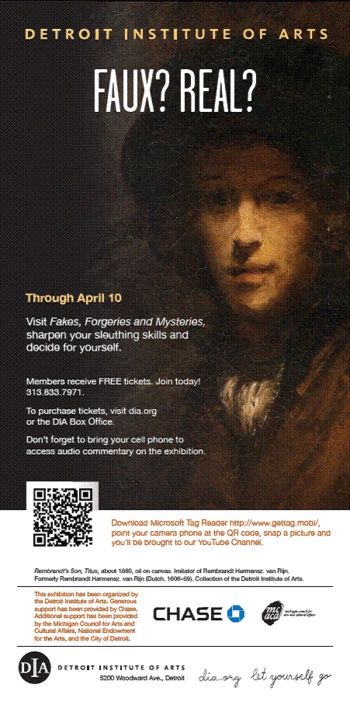 The show opened last November and runs through April 10, and DIA is using these podcasts both to spread the word and go deeper on the discoveries made for the exhibitions.
The show opened last November and runs through April 10, and DIA is using these podcasts both to spread the word and go deeper on the discoveries made for the exhibitions.
I find them fun, and so — though I’ve already written about the exhibit here — I’m posting again.
DIA plans to do five podcasts — four are up, and the fifth will be posted on Feb. 10. But it may have “enough” to produce a sixth one, too, according to Matt Fry, the marketing director.
As part of the attraction, DIA gives away free exhibition tickets (worth $12) to the first 10 people who watch the video and answer a question about the authentification process correctly.
Each videocast lasts about 3.5 to 4 minutes. They are easily findable on the DIA website: click on the exhibition and “Podcasts” appears on a tab, along with tabs for “Visitor Information” and “Faux/Real?”
They are also findable on the DIA’s YouTube channel, where (at the moment) they are not getting heavy viewership.
And, according to Fry, they are also available on ArtBabble, MetaCafe, DailyMotion, Vimeo and iTunes, and viewers have reposted them on other sites, like Facebook and Twitter. So it’s pretty impossible now to tell how many views they’ve had, though Fry says the museum will review the analytics after the series ends. He adds:
People are definitely learning about the science and research, and we’re having fun asking them to watch the videos and answer questions about the authentication process. We don’t currently have a survey mechanism in place to determine how many visit the show as a result, but we’re working with our internal researchers on a market segmentation type study that will help determine this in the future (“where did you hear about us”).
Are these the best podcasts out there? I couldn’t say, as I haven’t seen enough competitors. (Any informed critics out there?)
But I think they’re the way the museum world is going, and worth noting. We’ll be seeing more of these initiatives.
Photo Credit: Detroit Institute of Art


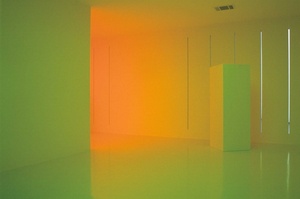
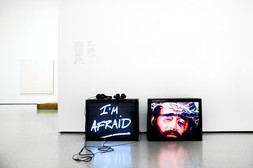
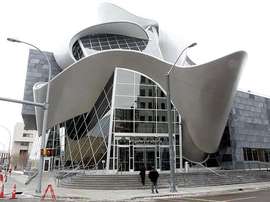 The AGA opened about a year ago, boasting on its website that “this architectural icon will draw visitors from around the world with twice the former gallery space….”
The AGA opened about a year ago, boasting on its website that “this architectural icon will draw visitors from around the world with twice the former gallery space….” 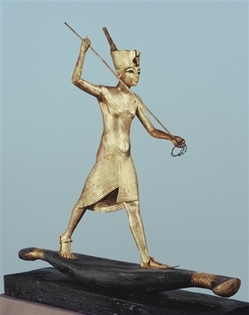
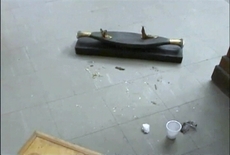 Maitland’s own
Maitland’s own